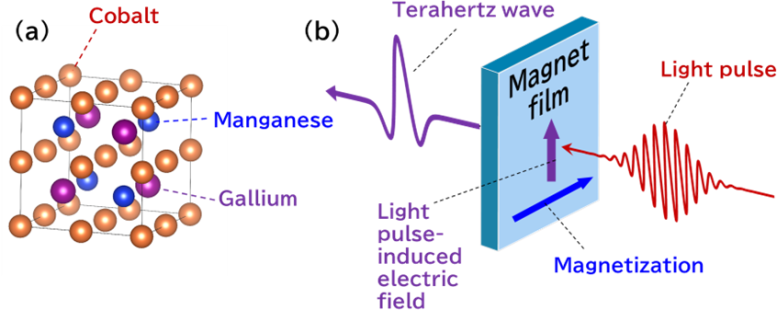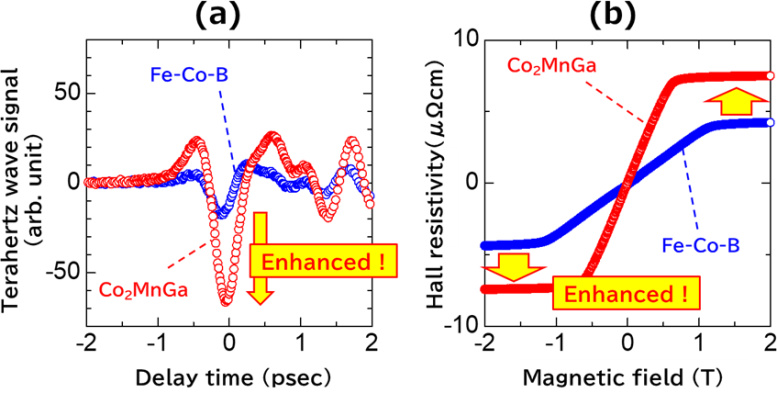
A new magnetic material discovered at Tohoku University can generate terahertz waves with significantly greater intensity, offering a potential leap in various technologies, from medical imaging to security. Credit: SciTechDaily.com
Positioned between microwaves and infrared light, terahertz waves are key to pioneering advancements in imaging and diagnostic technologies. A recent discovery at Tohoku University of a material that can emit these waves more intensely promises to catalyze significant breakthroughs across a spectrum of industries.
Terahertz waves are being intensely studied by researchers around the world seeking to understand the “terahertz gap.” Terahertz waves have a specific frequency that put them somewhere between microwaves and infrared light. This range is referred to as a “gap” because much remains unknown about these waves. In fact, it was only relatively recently that researchers were able to develop the technology to generate them. Researchers at Tohoku University have brought us closer to understanding these waves and filling in this gap of knowledge.
Breakthrough in Terahertz Wave Generation
Researchers at the Advanced Institute for Materials Research (WPI-AIMR) and Graduate School of Engineering have discovered a new magnetic material that generates terahertz waves at an intensity about four times higher than that of typical magnetic materials.
Taking advantage of the features unique to terahertz waves, this technology is expected to be used in a variety of industrial fields, including imaging, medical diagnostics, security inspection, and biotechnology. Assistant Professor Ruma Mandal (WPI-AIMR) explains, “Terahertz waves have low 
(a) Weyl magnet: schematic diagram of a crystal of cobalt-manganese-gallium Heusler alloy (Co2MnGa). (b) Light-induced terahertz waves. Credit: Shigemi Mizukami
Enhancing Terahertz Emission With Weyl Magnets
With these applications in mind, a team of researchers at Tohoku University aimed to develop an efficient, compact, sturdy, and cost-effective terahertz wave emitter. Weyl magnets — a type of topological material — have been shown to generate a huge anomalous Hall effect that make them suitable for generating terahertz waves. In this study, single-crystal thin-film samples of a Weyl magnet made from a cobalt-manganese-gallium Heusler 
(a) Photo-induced terahertz waves generated from the Weyl magnet: cobalt-manganese-gallium Heusler alloy (Co2MnGa) thin film observed in this study. (b) Anomalous Hall effect observed in the corresponding thin film sample. Credit: Shigemi Mizukami